The Denver Broncos are preparing for their 56th player draft as either an American or National Football League team, and each one of those evokes specific memories of selections.
The NFL's draft is by far the most widely covered and a huge volume of spoken and written words are documenting every player of what is a great time for pro football fans.
But I thought we might take a quick jump back in time to a draft that could be called the most impactful in the history of the Broncos.
It was 1983 and the talk of the NFL was where the fantastic quarterback from Stanford would wind up playing as a pro—and, actually, in which sport: baseball or football.
John Elway had been the most talked about player in college football since his freshman year and there was no question whatsoever that he would be the first player taken, but there was heavy speculation that he would be traded, with several teams not including Denver being mentioned regularly.
In addition, he had been a first round pick in baseball by the New York Yankees and had played a summer of minor league baseball with the Yankees' Oneonta team in the New York-Penn League.
The Broncos have drafted impact bruisers to hold up their offensive line throughout their history.

Mike Current (1967 NFL Draft - third round, 58th overall) lead blocks for Floyd Little. Current spent a little over eight years with Denver, starting in 105 of 108 games as a Bronco, with one season as a Pro Bowl selection.

George Goeddeke (1967 NFL Draft - third round, 59th overall) played for six years in the NFL, all with the Broncos. A one-time Pro Bowler, Goeddeke started in at least 55 of 66 career games.
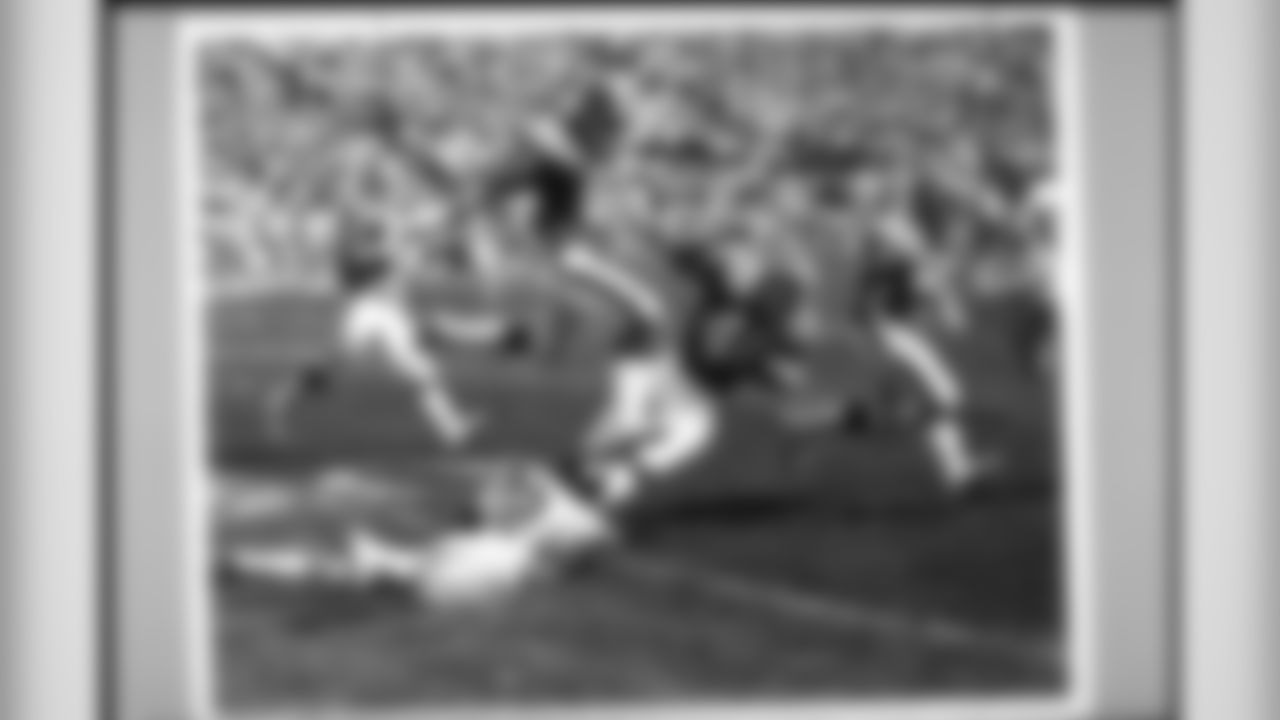
Paul Howard (1973 NFL Draft - third round, 54th overall) leaps over an opponent to try to make a block down the field. Howard played for 13 years in the NFL, all with the Broncos, starting in at least 147 of 187 career games.
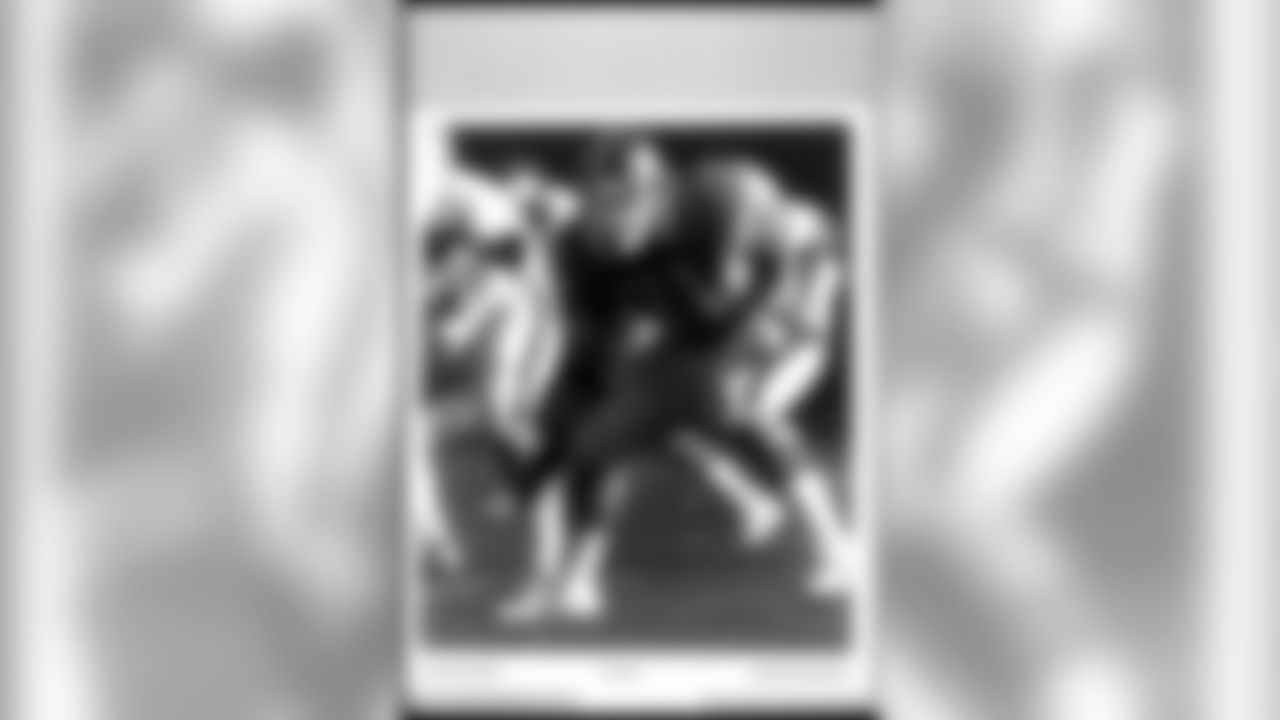
Claudie Minor (1974 NFL Draft - third round, 68th overall) moves at the snap to make a block. Minor started in 123 of 125 career games with the Broncos over his nine-year career, all spent in Denver.

Tom Glassic (1976 NFL Draft - first round, 15th overall) looks on from the sidelines during a preseason game against the Los Angeles Rams in 1982. Glassic played eight years in the NFL, starting 92 of 105 career games.
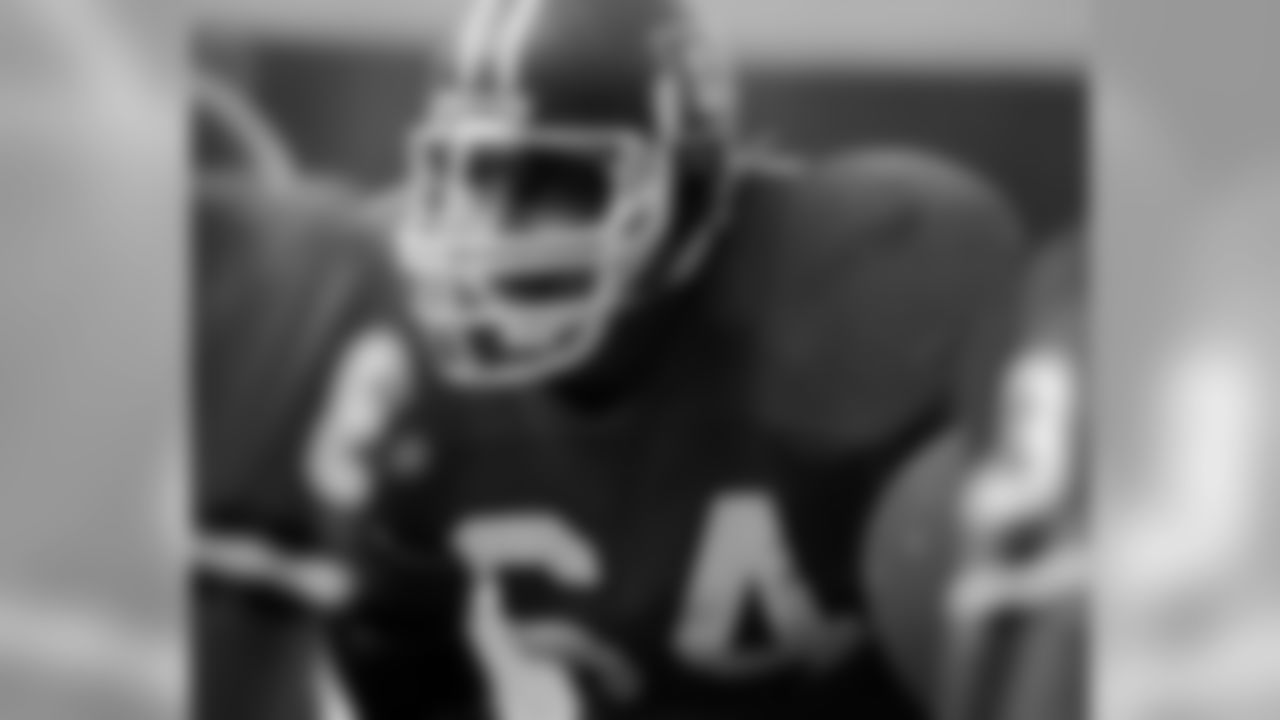
Center Bill Bryan (1977 NFL Draft - fourth round, 101st overall) listens in a huddle during a game against the Los Angeles Raiders in 1982. Bryan spent his entire 12-year career with the Broncos, starting in 151 of 153 games.
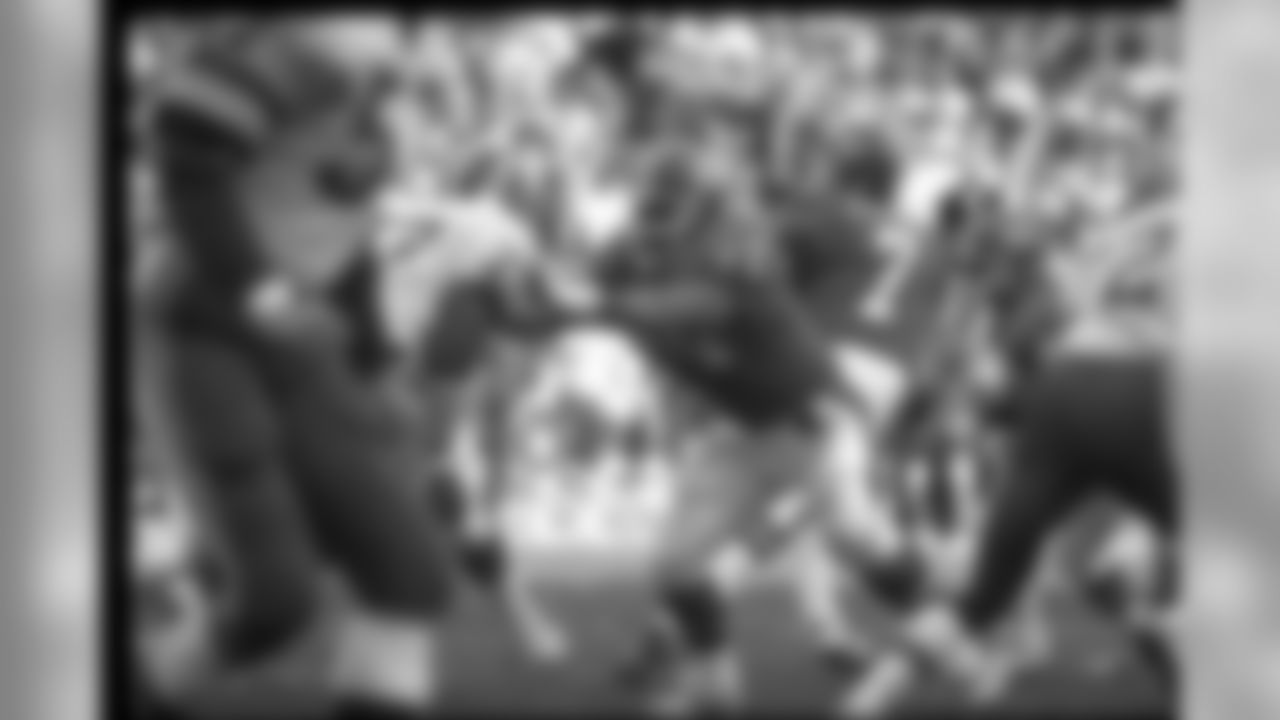
Center Keith Bishop (1980 NFL Draft - sixth round, 157th overall) blocks a Washington defensive lineman in 1988. Bishop started 87 of 129 career games as a Bronco and was a two-time Pro Bowler.
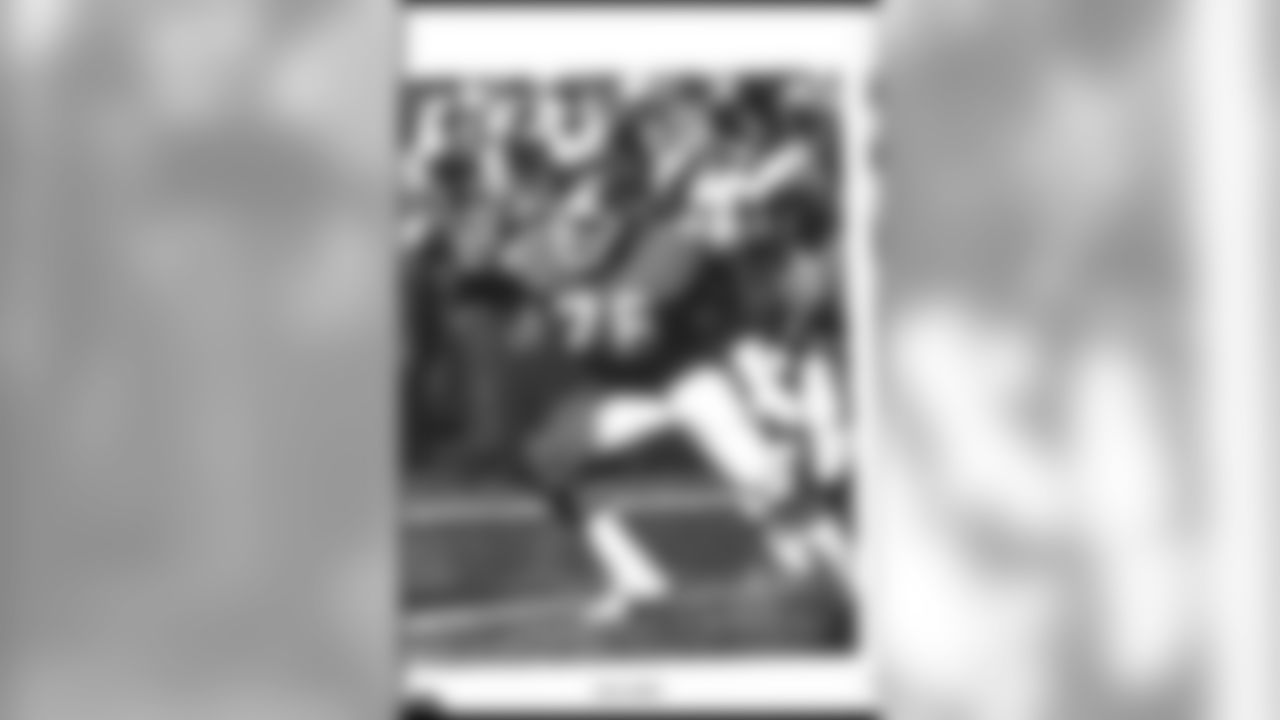
Ken Lanier (1981 NFL Draft - fifth round, 125th overall) reaches to make a block on a pass rusher. Lanier played all but one year of his 14-year career with the Broncos, starting 165 of 177 games.
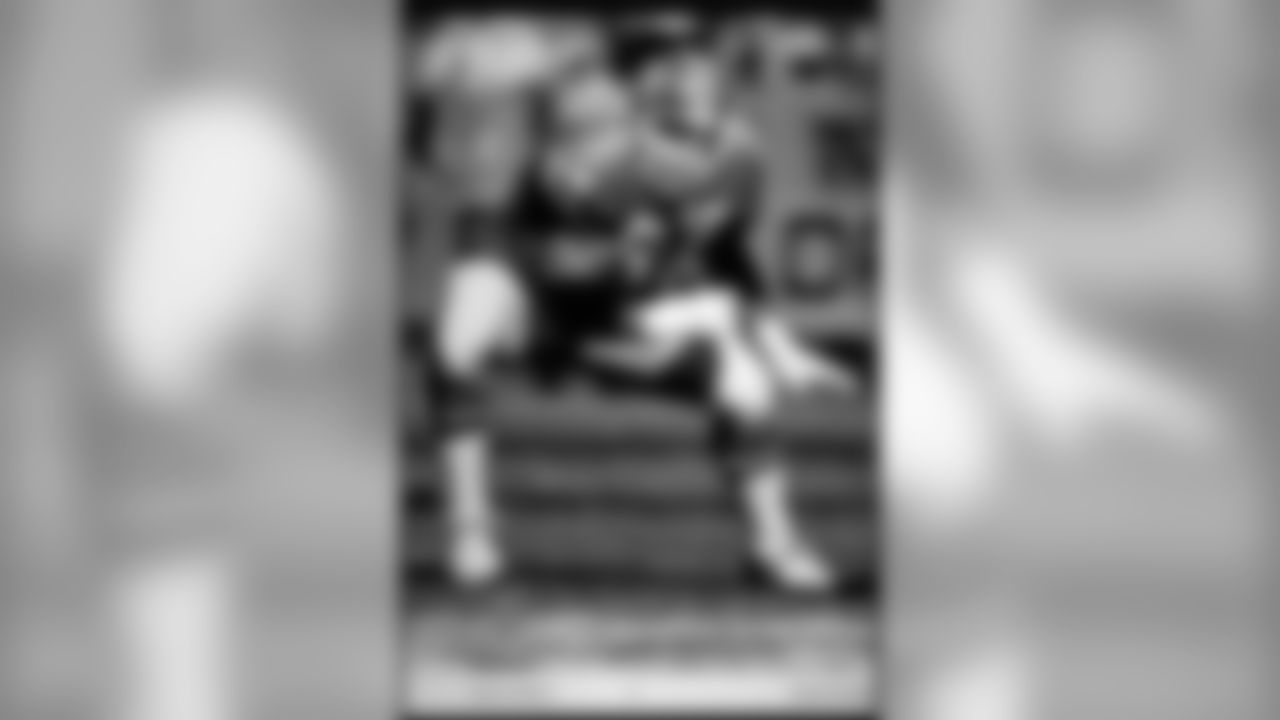
Guard Doug Widell (1989 NFL Draft - second round, 41st overall) shuffles to his right after the ball is snapped. Widell played eight years in the NFL, his first four years coming in Denver. He started in 58 of 64 games as a Bronco.
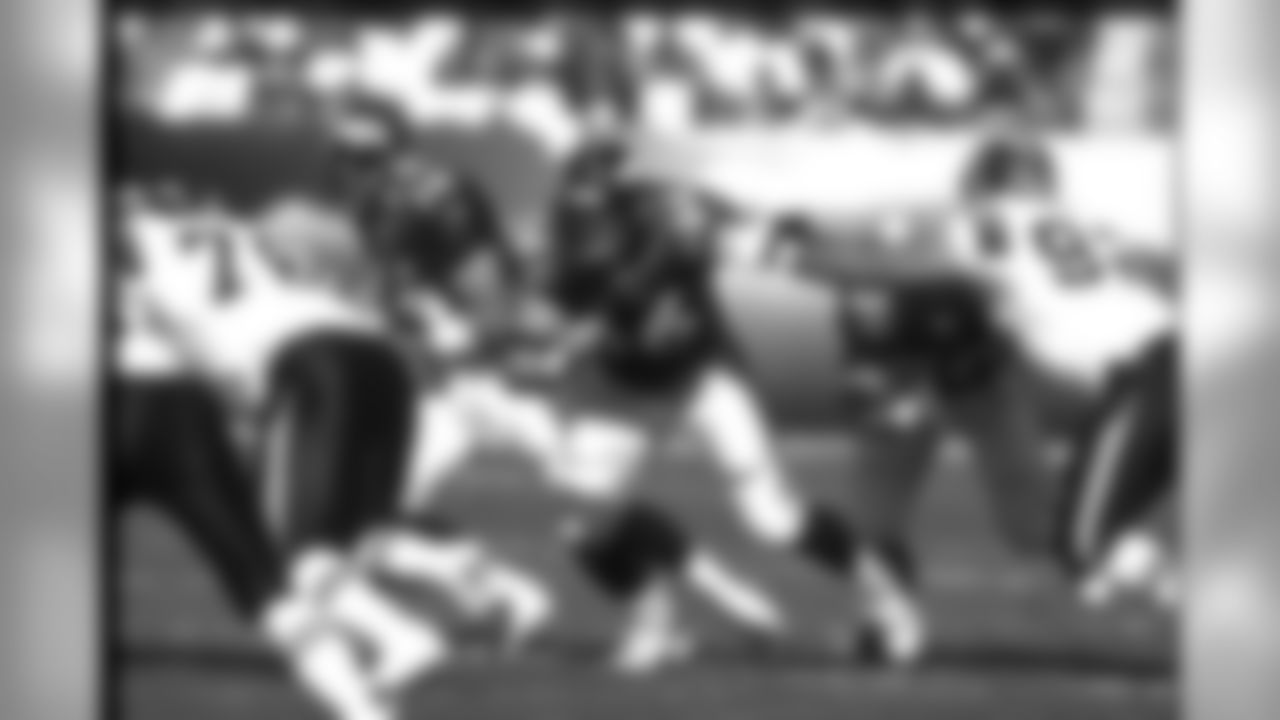
Tom Nalen (1994 NFL Draft - seventh round, 218th overall) moves into position to block against the Chargers in 2002. Nalen, a five-time Pro Bowler and two-time First-Team All-Pro, played 14 years with the Broncos, starting 188 of 194 career games, all with Denver.
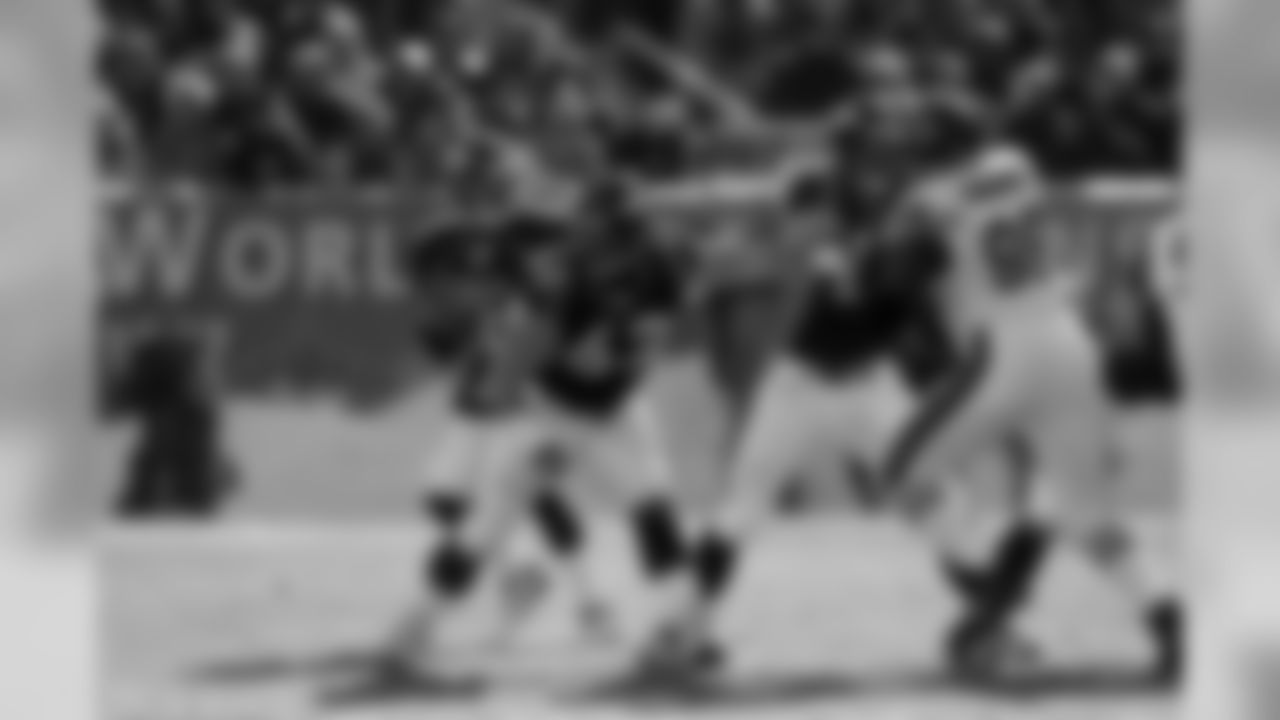
Dan Neil (1997 NFL Draft - third round, 67th overall) looks to protect the quarterback in a game against the Bears in 2003. Neil played eight years with the Broncos, starting 104 of 108 games.

Cooper Carlisle (2000 NFL Draft - fourth round, 112th overall) makes a block against the Seattle Seahawks in 2003. Carlisle played seven seasons with the Broncos and 13 seasons total in the NFL. As a bronco, he started in 38 of 95 career games.
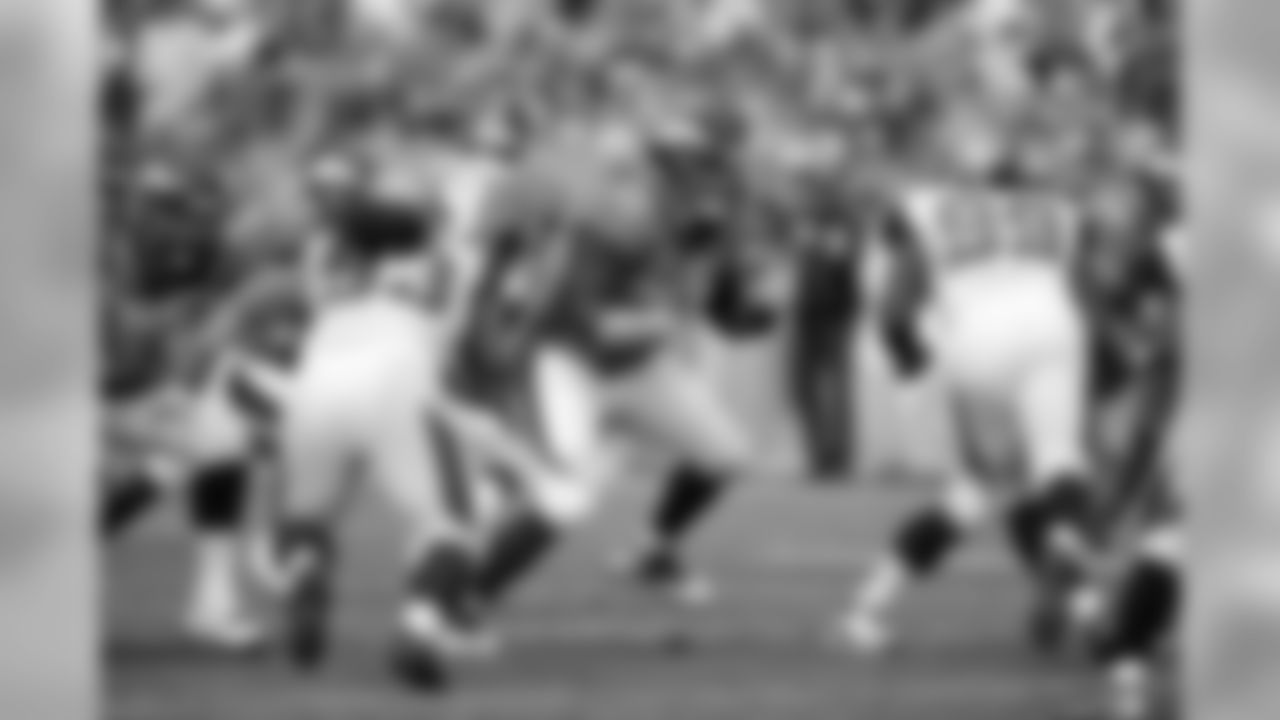
Guard Chris Kuper (2006 NFL Draft - fifth round, 161st overall) prepares to block an oncoming Jaguars defensive lineman. Kuper started in 79 of 90 games as a Bronco in his eight-year career.
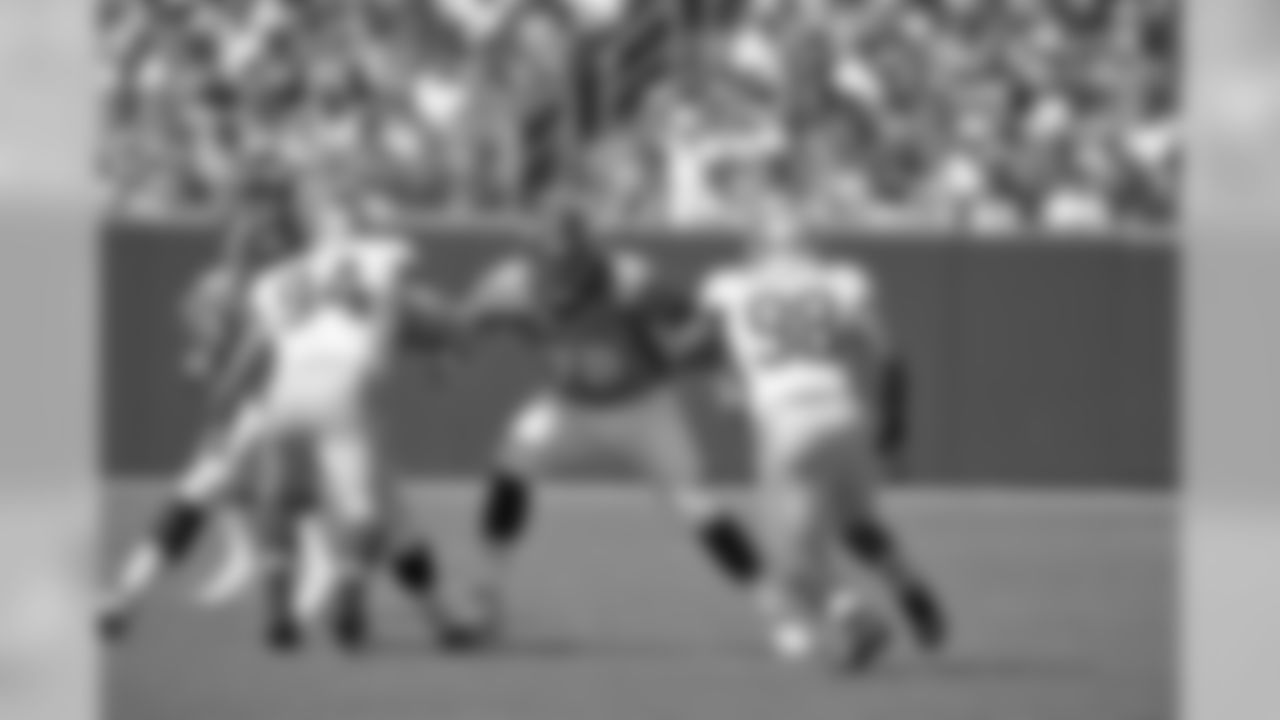
Ryan Clady (2008 NFL Draft - first round, 12th overall) blocks the 49ers defensive line. Clady, a four-time Pro Bowler and two-time First-Team All-Pro, has started in each of his 98 career games, all with the Broncos.
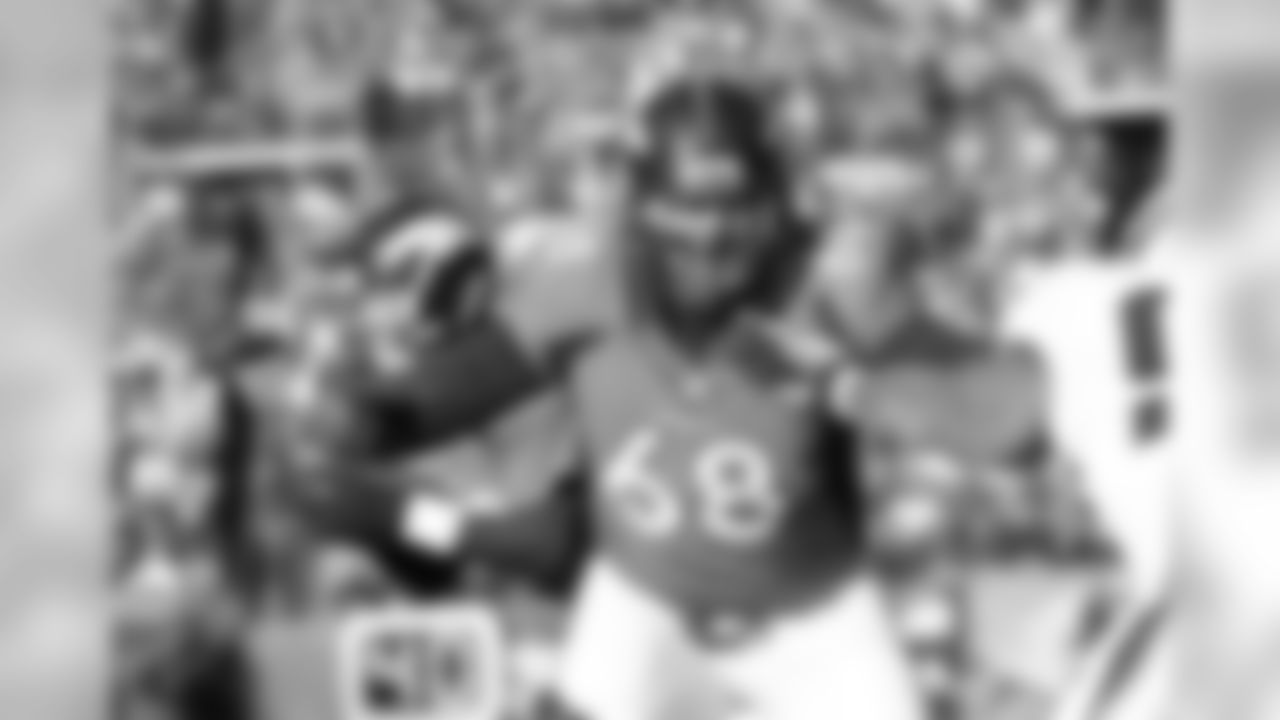
Zane Beadles (2010 NFL Draft - second round, 45th overall) prepares to block a Tennessee Titans lineman in 2013. Beadles, now with the Jaguars, spent his first four seasons with the Broncos, starting in 62 of 64 games with Denver.
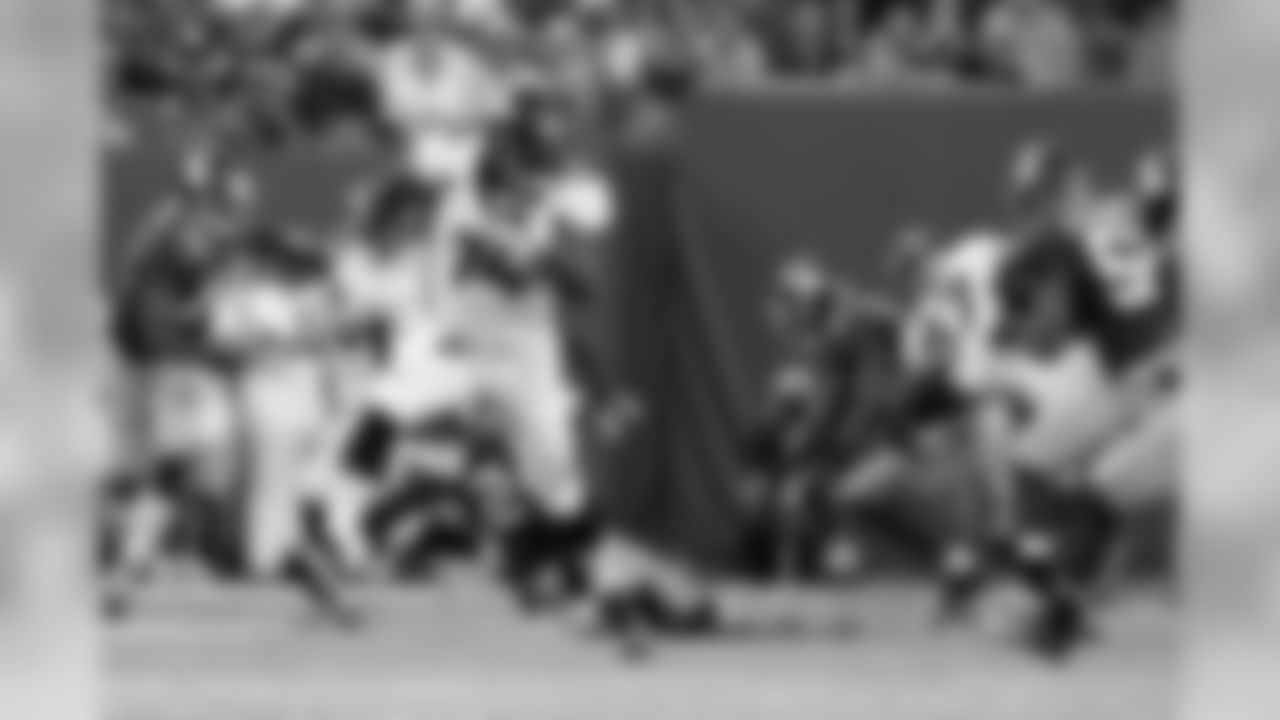
Orlando Franklin (2011 NFL Draft - second round, 46th overall) steps out looking to make a block downfield. Franklin, now a Charger, played his first four seasons as a Bronco, starting each of his 63 games.
In fact, unknown to most people, the rules of the time were such that if you signed a pro contract in one sport, you lost eligibility in all, so John actually had to pay his own tuition—no scholarship!—for his last two seasons of football at Stanford.
It was a 12-round draft in 1983, and the Broncos set the direction of the team for decades in the week comprising the draft and the days to follow.
Elway way indeed taken first by Baltimore, but Colts' owner Robert Irsay traded John to Denver a week after the draft, and the rest was history for both franchises.
In the second round, the Broncos drafted Mark Cooper, who became one of Elway's guardians on the offensive line and was with Denver for Super Bowls XXI and XXII.
In the third round, the Broncos added wide receiver Clint Sampson, who played with Denver in Super Bowl XXI and caught a touchdown pass in Elway's first comeback game, the win over Baltimore in the last home game of 1983.
But Denver actually added two future Ring of Famers in that draft, as the Broncos selected Karl Mecklenburg with their very last pick in the 12th round.
Unknown and unheralded, "Meck" made a name for himself literally starting with the first day of camp.
He simply could not be contained in pass rush drills, and I remember noting to another observer my opinion that the second best sure thing on the roster, after Elway, was going to be the 310th selection in the draft, Karl Mecklenburg.
But in addition to those cornerstones on offense and defense, in the eighth round, with overall pick number 228, the Broncos chose not only Elway's backup quarterback for the next nine years, but a man whom Elway the general manager would hire as the current head coach of the Broncos, Gary Kubiak.
Gary of course became widely thought of as the best backup quarterback in pro football and earned American Football Conference championship rings for the 1986, 1987 and 1989 season.
But some will remember how he almost brought to the Broncos to the Super Bowl in 1991, directing a stirring comeback at Buffalo after an injury to Elway.
The comeback was cut short on the final drive due to a fumble, and Kubiak had announced prior to the season that he would be retiring, so the game was a tremendous goodbye for the polite and quiet Texan.
Of course, it is well-known how Gary became a tremendous coach and returned to Denver as offensive coordinator for the Super Bowl championship teams of 1997 and 1998, and now he is back for his third stint, this one as head coach.
He is back and John is back and it all just seems too right for Broncos Country.
It all started with the 1983 draft, when Denver either drafted or traded for a Hall of Fame and Ring of Fame quarterback, a Ring of Fame linebacker who remains a very strong Hall of Fame candidate, as well as a future general manager and a future head coach.
The time frame ranges into its fourth decade, from 1983 to the tremendous promise of the future, making the 1983 draft a very dynamic one indeed for the Denver Broncos and the Mile High City.






